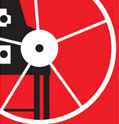April 7, 2020
Do you Know your Brushes? Brush Glossary
 Learn how the variations in brush types, shapes and sizes can affect your artistic style. The best quality bristles come from a strip running across the backs of wild hogs in Chungking Province, China. Bristle hairs are stiff and coarse with natural curve and have a V-shaped split end called a “flagged tip”.
Learn how the variations in brush types, shapes and sizes can affect your artistic style. The best quality bristles come from a strip running across the backs of wild hogs in Chungking Province, China. Bristle hairs are stiff and coarse with natural curve and have a V-shaped split end called a “flagged tip”.
BRUSH HAIRS AND BRISTLES
- Bristle
The best quality bristles come from a strip running across the backs of wild hogs in Chungking Province, China. Bristle hairs are stiff and coarse with natural curve and have a V-shaped split end called a “flagged tip”. Brushes formed with the flags turning into (or interlocked with) the ferrule offer the most spring, shape retention and control. Bristle brushes are best suited for oils and acrylics. - Camel Hair
This is the trade name for brushes made of squirrel, goat, pony, bear, sheep or a blend of any of these. They range greatly in softness, quality and cost. Actual camel hair is too woolly for brushes. - Kolinsky Sable
This is the most valuable and expensive soft brush hair. It comes from the tails of “mustela sibirica”, a marten found in the cold river valleys of Siberia. Brushmakers obtain the tails from furriers. Martens from the coldest valleys produce the longest and best hairs for brushes. Strength, thickness, spring and fine point are the qualities associated with kolinsky red sable. This hair makes the finest watercolor brushes. - Mongoose
Softer than hog bristle but stiffer than ox hair, mongoose hair makes versatile, durable brushes for oil, egg tempera, alkyd and acrylics. - Ox Hair
The best quality hairs come from the ears of South American and European oxen. They are strong in body, have good springiness and tapered points. Natural shades range from white to black. Suitable for oil and water-media, ox hair is used alone or blended with other hairs. Because of its elasticity and color carrying ability, ox hair makes an excellent brush for heavier colors. - Raccoon
Resilient, with good point retention, raccoon hair is used mainly in sumi brushes. - Red Sable
This soft brush hair comes from the tail of the Asiatic weasel– a type of marten. Golden red in color, the hairs are not as fine or springy as kolinsky sable and are only half as expensive. Red sable hair makes outstanding brushes for watermedia and oil. - Sabeline
This name is applied to the finest grades of light ox hair, dyed to resemble red sable. Used primarily for watercolor and lettering, sabeline brushes yield good results at a cost below that of red sable. - Sheep & Goat Hairs
These are used alone, or blended, for sumi and calligraphy brushes. The best hairs are yellowish in color and are boiled for straightening. While hairs have excellent absorbency and pointing ability, they lack spring. - Squirrel Hair
This soft, absorbent hair points well when wet, but has little spring. Kazan, the best squirrel hair, has good elasticity– ideal for washes, lettering and smooth painted finishes./span>
BRUSH SHAPES
- Bright
Resembling a flat with shorter hairs, this fan-shaped brush is used for short controlled strokes and impasto. - Filbert
Capable of yielding thick to thin strokes without hard edges, it is shaped like a flat or bright with rounded corners. - Flat
With its square end for broad, sweeping strokes, a flat offers great freedom and control for painterly effects and backgrounds. - Hake
Pronounced ha-kay, this Asian brush is used for backgrounds or broad washes, in sumi or watercolor paintings. Wide and flat, it is usually made of sheep or goat hair. - Liner Shaped
to produce continuous lines without reloading, it offers great control for architectural renderings and lettering. - Mop
Full-bodied to hold a lot of fluid, it forms a controllable tip when wet and can apply large areas of color efficiently. - Rigger
Its elongated shape is designed for painting minute details. - Round
This versatile shape is capable of yielding thick to thin strokes and great detail. Sable rounds point more than bristle rounds when wet. - Script
Its elongated shape offers optimal control for lettering or geometric line work. Long bristles hold enough paint to make long continuous lines. - Detail
Short, precisely pointed bristles provide control for close detail work.
Courtesy of Daniel Smith Inc.


